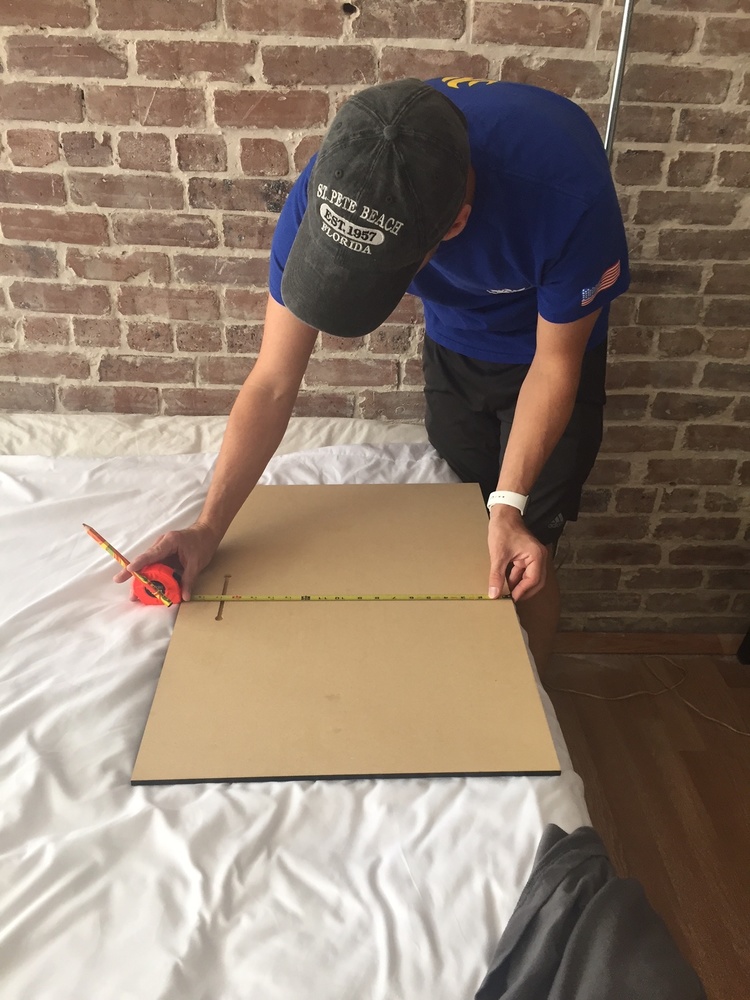In the digital world it may almost seem as though selling albums or wall art would be a thing of the past. The majority of clients will want to post their session to social media and go about their day. As photographers, it is up to us to educate the client about the importance of having a physical piece of art as well as the right type of art for their home.
However if you do not have any samples in your studio to show, how will they understand the importance and the impact it can make? Digital images can be a fantastic way to show off a client session to hundreds of their friends on social media in a matter of minutes. But there is no comparison to a piece of hanging wall art in their home. It shows size, depth, colors, and creates an impact in their mind that a digital just cannot compete with.
Recently during a renovation to my studio I wanted to create a huge wall of samples for my clients to see the work, but also to understand the size comparisons. Laminart Industries located in Abbotsford, BC, has been a great resource for the metal print work used in the studio. During a gallery exhibition last year, Tyler Lanz at Laminart created 3 metal prints that I wanted to piece together in a large display across the back empty wall of the studio. 
Working with Lanz I sent him the empty wall space so we could combine thoughts on the best display. We chose an underwater images as the large main piece measuring 30X40. The journey from a digital file to these types of wall art is not cheap. "Millions of dollars of specialized equipment, and skilled printing professionals. The process of photographing, editing, and creating a digital file to send off for printing is a process with it's own unique pilgrimage." wrote Lanz. Once the file enters production it is downloaded and categorized. I wanted to keep consistent with the previous gallery pieces so the Lex aluminum mount print became the main work on the wall. Lanz and his team carefully check and recheck for quality, resolution, correcting sizing and other particular areas such as color and ICC profile matching.

Image with permission and courtesy of Tyler Lanz
Lanz explained that for printing, some companies will do large runs of orders to maximize efficiency, whereas some will do smaller more frequent batches. The team has found that the most success is in the smaller batches for a degree of efficiency and the highest quality . Typically running 10-12 aluminum prints at a time grouping into smaller categories, Lanz can inspect and compare for inconsistencies. After this is complete, the metal print is affixed to the backing in the Lex mount option.

Image with permission and courtesy of Tyler Lanz
Packaging of the print sees it wrapped in foam with a custom box based on the size of the metal, and a wood bottom plate for extra protection along with each side being sealed so there is not entry point for the package to open during the shipping process. Within 7 days they were at my door and when Lanz wrote it was packaged tightly he was not joking. It was easier to break into Fort Knox than the box, which made me relieved to know my large print was safe.
Once at the studio, my manager and I created digital ideas on how to hang the pieces rather than attempting to Swiss cheese the walls. Using a program called Fundy, I was able to take the images and place them onto my wall space in the software (note that the yellow caution triangle is just a warning that the resolution is too small for that size. I used small images just for the digital display). 

After seeing how much more wall space there was left, we decided to hang in a position where we could keep adding to the display with new work. The largest piece would be used as the main and configuring the smaller work around it. Placing all images on the floor to measure the distance between them all to create a uniform look as well as giving us the ability to make any changes as well.



The final display gave the studio a new look and helps clients choose sizing with a complete visual. Just as with albums, if a client can hold it or see it they are more likely to invest in the product. If you do not have samples in your studio it can be difficult to explain the impact a piece of wall art can give to a room. A client may think a size of 11X14" will work fine until they see these larger samples. The first impression is always outstanding when they realize they can go bigger. Since hanging the metal work, sales on wall art have risen just as expected.







great work... best wishes from Ladakh in Himalaya
Thank you!
Photos on your wall making your photograph alive. Thank you for sharing!